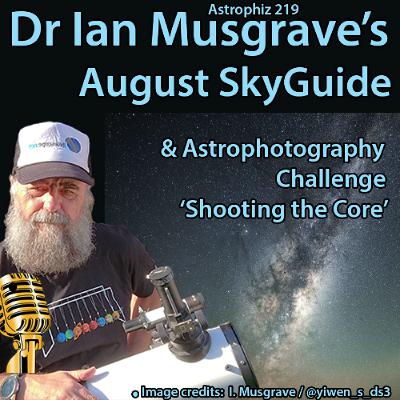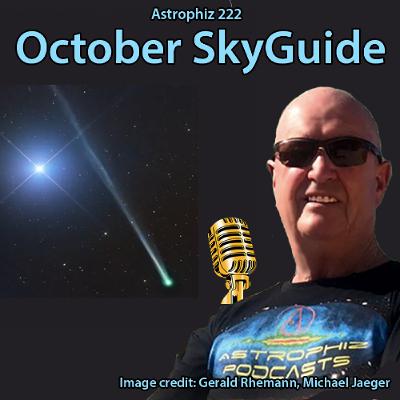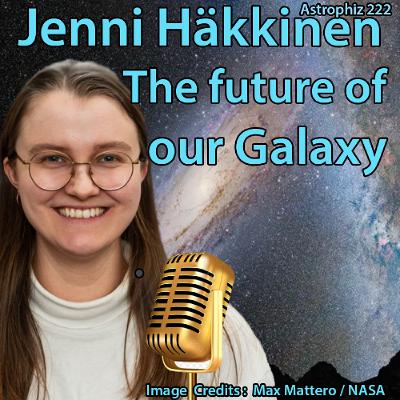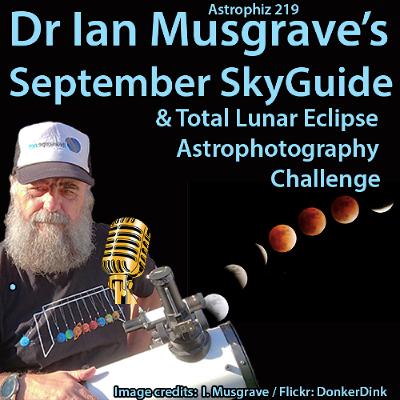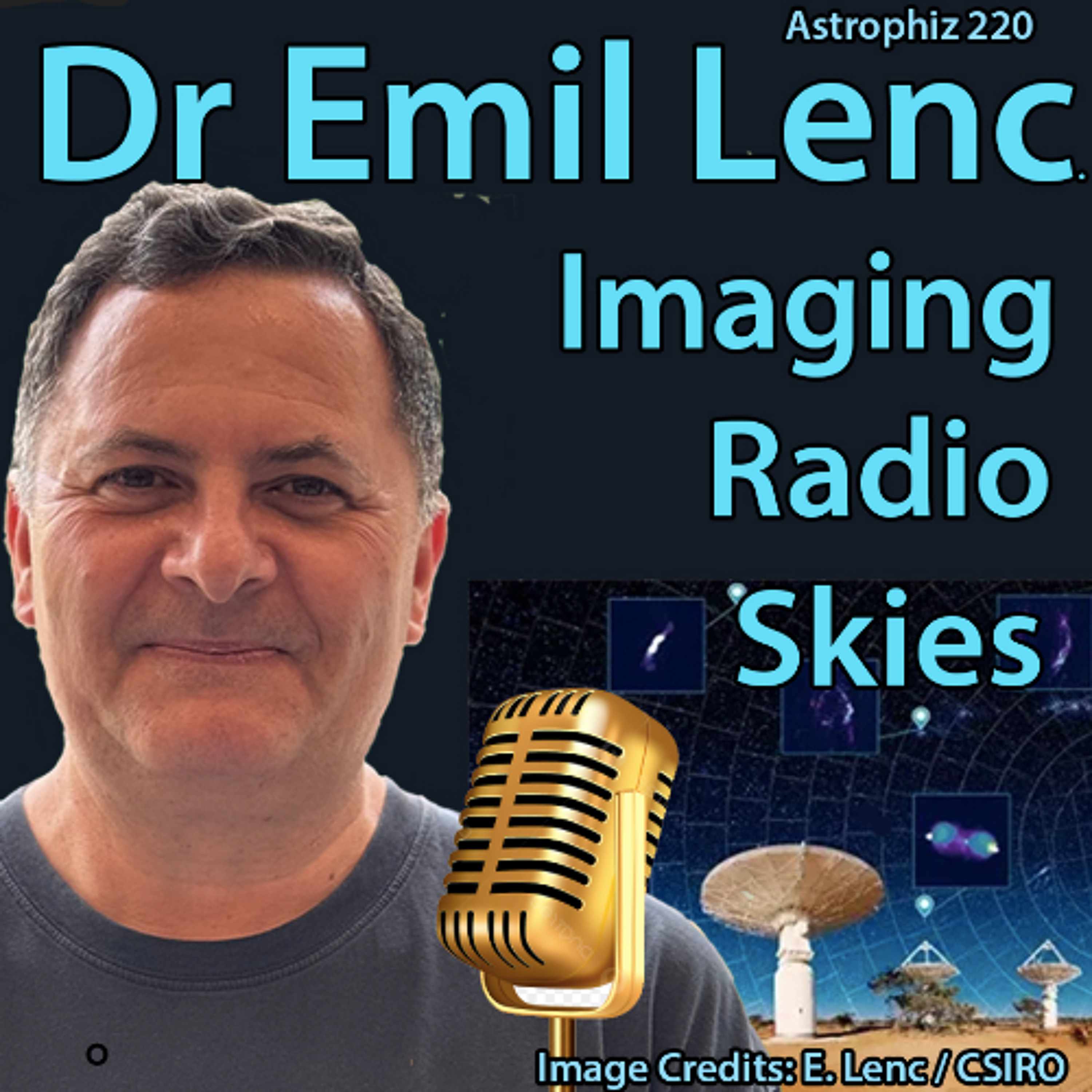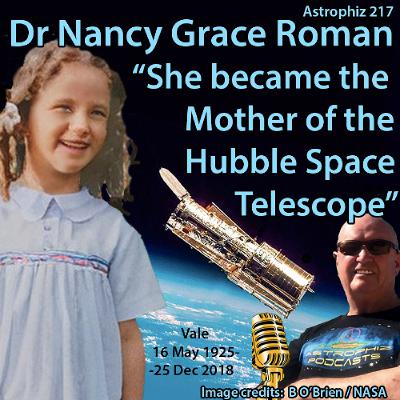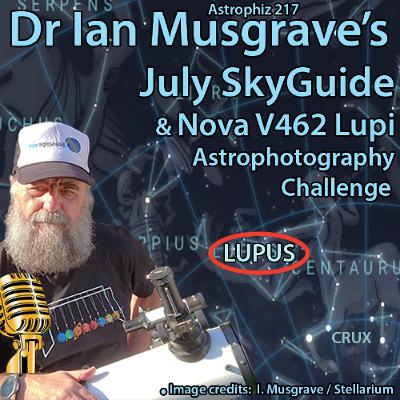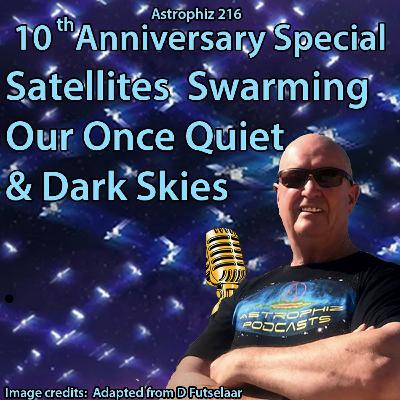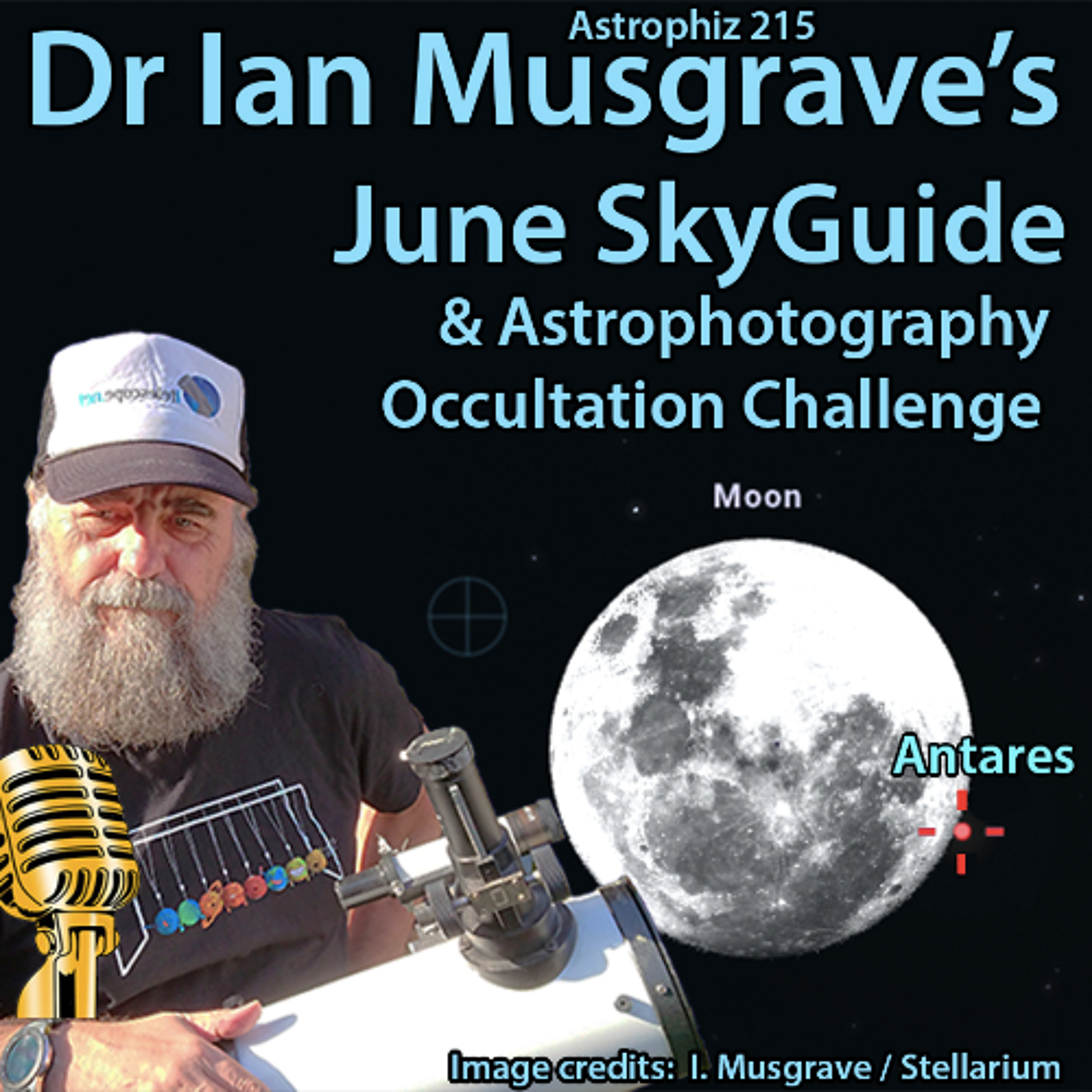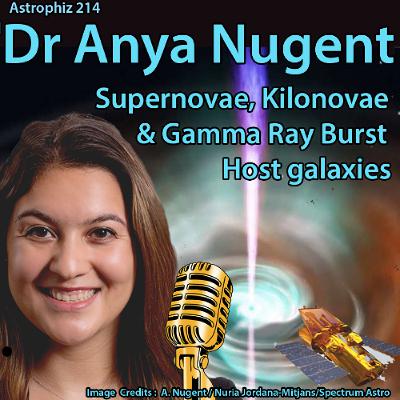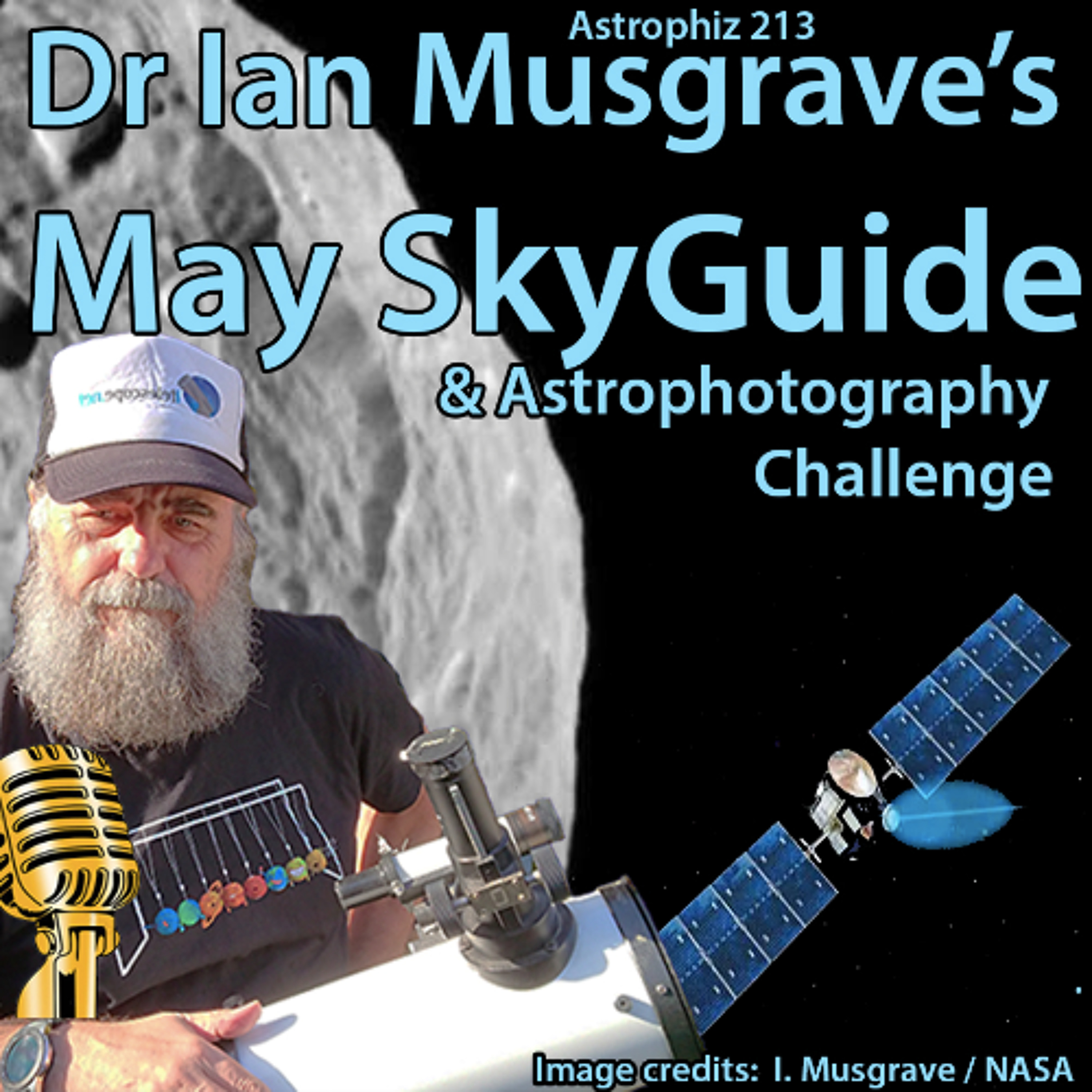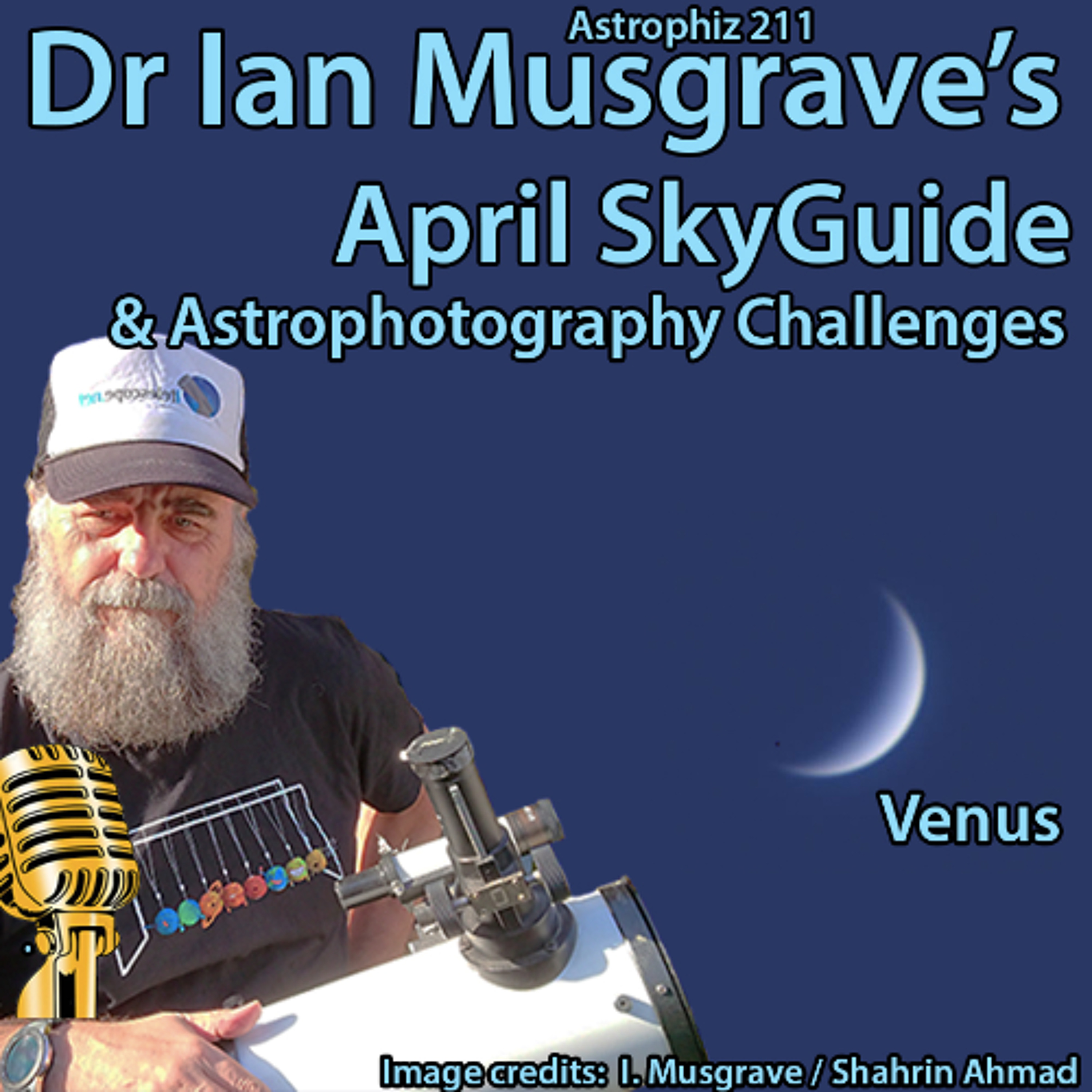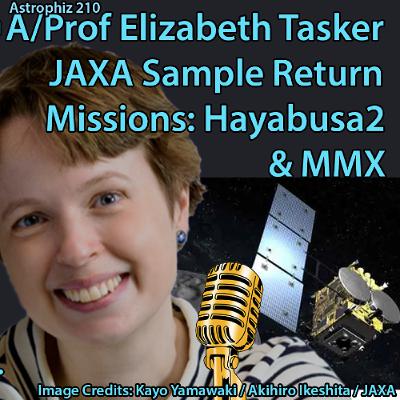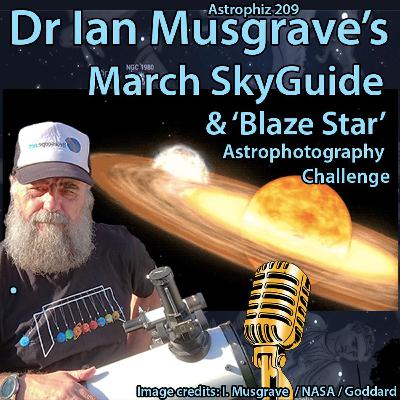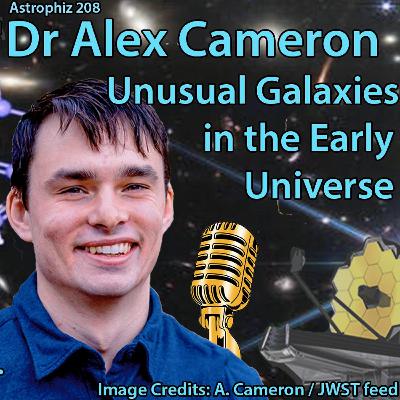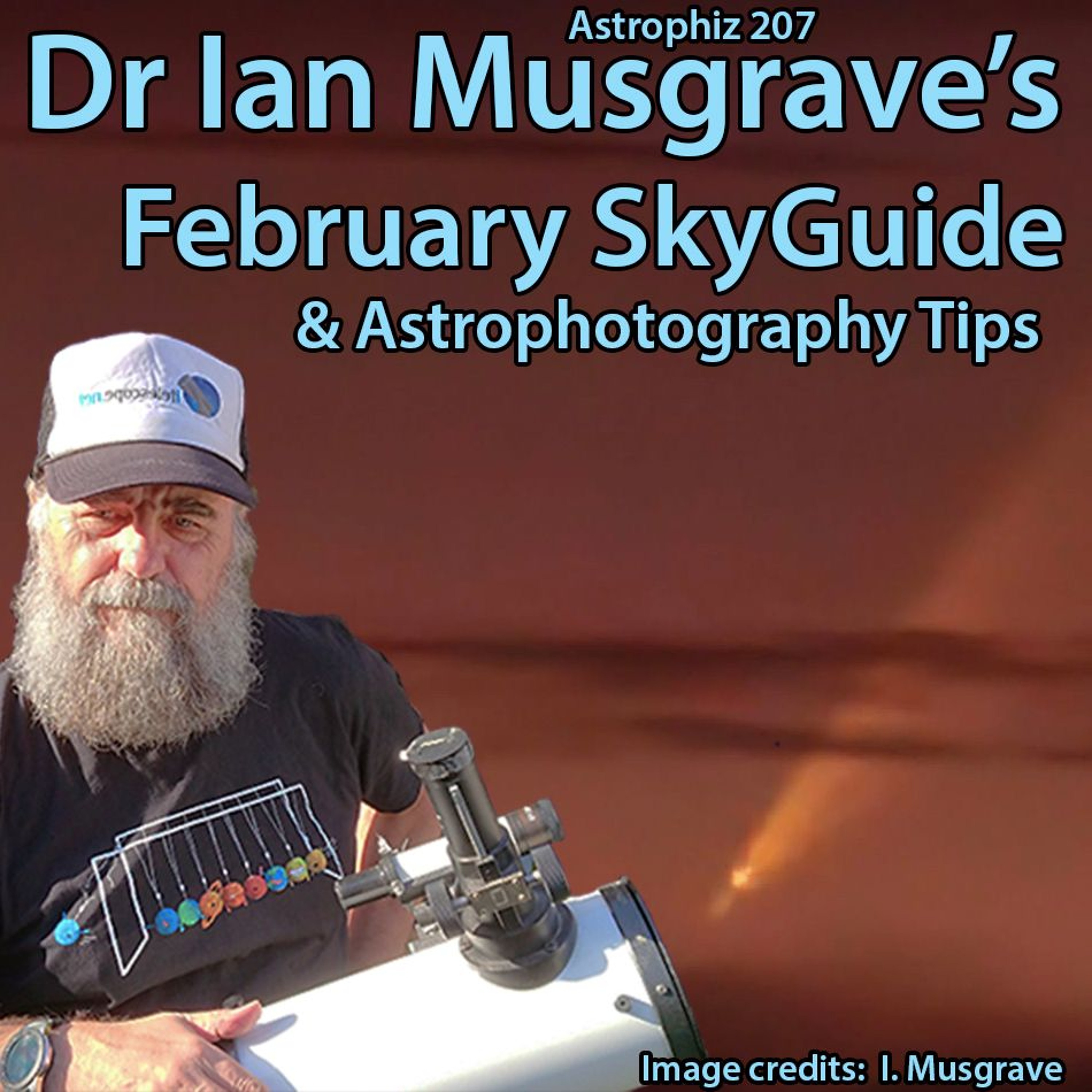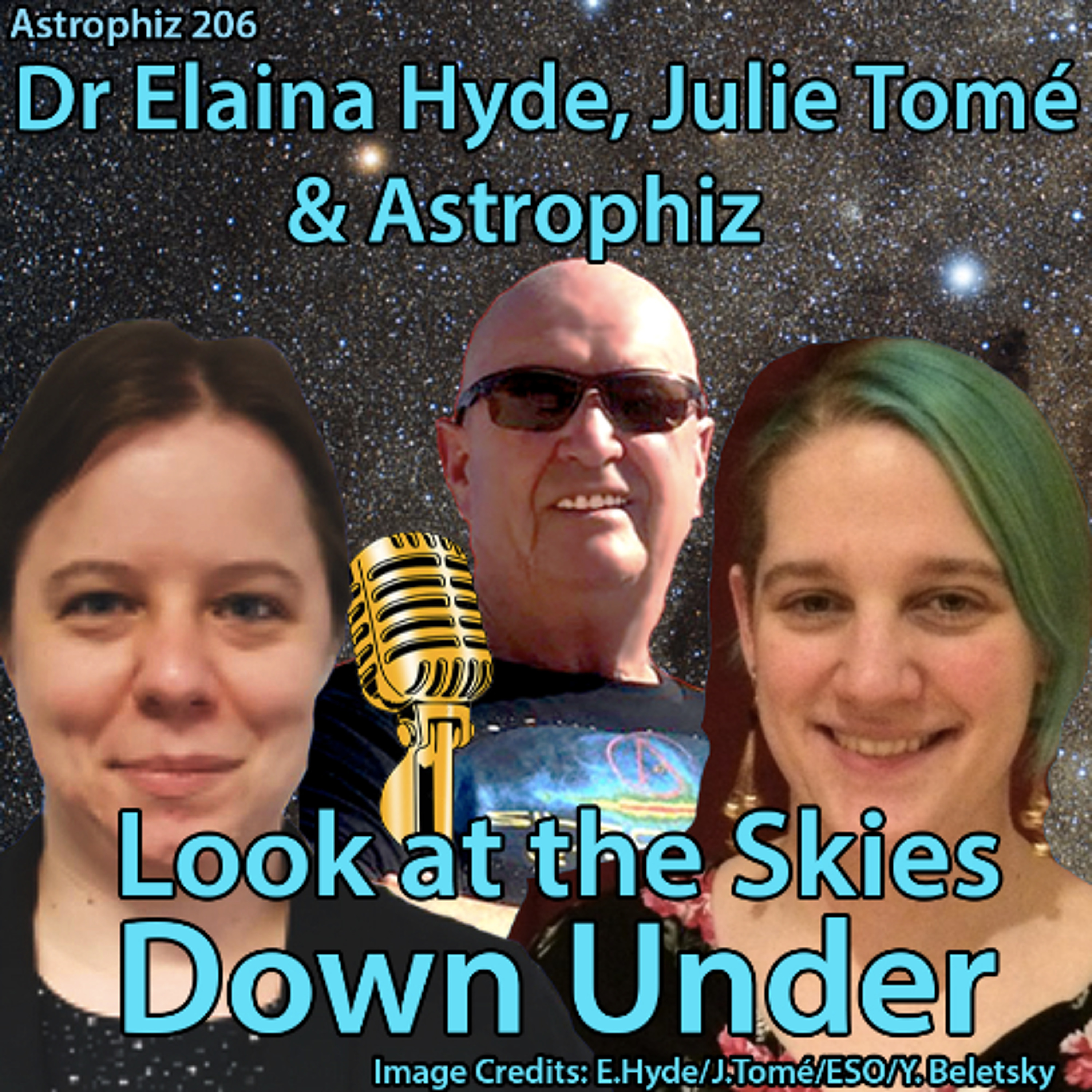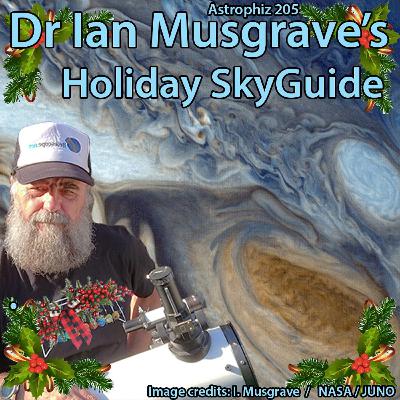Astrophiz219-August SkyGuide
Update: 2025-07-30
Description
Astrophiz Astronomy 219 ~ Dr Ian Musgrave’s August SkyGuide & Astrophotography Challenge
August Moon Phases:
August 1 - 1st Quarter Moon
August 2 - Moon at apogee (furthest from earth)
August 9 - Full Moon
August 15 - Moon at perigee (closest to earth)
August 16 - Last Quarter Moon - Ideal for Stargazing
August 23 - New Moon - also ideal for Stargazing
August 30 - Moon at apogee again! (furthest from earth)
August 31 - 1st Quarter (Blue) Moon again!
'Luna X’ is quite visible in early evening on August 1st
3 August - Occultation of 2 Scorpii and 3 Scorpio by the moon
Evening Skies:
Mars is fading, but obvious in the Western evening sky, setting around 9PM
3 August - Mars and Beta Virginis are extremely close ( <1° apart)
12 & 13 August: Saturn rising very close ro the waning Moon
26 August: Mars near to thin crescent Moon (just 4° apart)
Morning Skies:
All of August: Saturn is lowering close to Neptune (1-2°) in morning sky
3 & 4 August:Venus close to star Propus (𝝶 Geminorum, 1°)
19 August - Lineup of Jupiter, Venus and Mercury
20 August: Jupiter near crescent Moon (6° apart) 5:45 am East
21 August: Venus near thin crescent Moon (7° apart)
TCoronaBorealis still hasn’t gone nova, so keep watching it,
Two Novae are currently observable in Southern Skies.
Nova V462 Lupi is still visible in the constellation Lupus, just above the constellation Scorpius, it’s quite obvious if you age a chart and binoculars (see Ian's ‘Astroblogger’ website for the chart)
Nova V572 Velorum
A nova has erupted in the constellation of Vela, the sail. Known as Nova V572 Velorum it is faint (around magnitude 5.7-5.8, at the unaided eye threshold) and may be glimpsed by those with good visual acuity under dark sky conditions. However, it is best with binoculars of a small telescope. It is well placed for southern hemisphere observers and visible from the early evening on. It is close to the Southen Pelaides (Theta Carina) and the eta Carina nebula. (see Ian's ‘Astroblogger’ website for the chart)
Ian’s Tangent: Bogong Moths using the Milky Way to navigate 1000 kilometre flights
Ian’s astrophotography Challenge: ’Shooting the Core'
August Moon Phases:
August 1 - 1st Quarter Moon
August 2 - Moon at apogee (furthest from earth)
August 9 - Full Moon
August 15 - Moon at perigee (closest to earth)
August 16 - Last Quarter Moon - Ideal for Stargazing
August 23 - New Moon - also ideal for Stargazing
August 30 - Moon at apogee again! (furthest from earth)
August 31 - 1st Quarter (Blue) Moon again!
'Luna X’ is quite visible in early evening on August 1st
3 August - Occultation of 2 Scorpii and 3 Scorpio by the moon
Evening Skies:
Mars is fading, but obvious in the Western evening sky, setting around 9PM
3 August - Mars and Beta Virginis are extremely close ( <1° apart)
12 & 13 August: Saturn rising very close ro the waning Moon
26 August: Mars near to thin crescent Moon (just 4° apart)
Morning Skies:
All of August: Saturn is lowering close to Neptune (1-2°) in morning sky
3 & 4 August:Venus close to star Propus (𝝶 Geminorum, 1°)
19 August - Lineup of Jupiter, Venus and Mercury
20 August: Jupiter near crescent Moon (6° apart) 5:45 am East
21 August: Venus near thin crescent Moon (7° apart)
TCoronaBorealis still hasn’t gone nova, so keep watching it,
Two Novae are currently observable in Southern Skies.
Nova V462 Lupi is still visible in the constellation Lupus, just above the constellation Scorpius, it’s quite obvious if you age a chart and binoculars (see Ian's ‘Astroblogger’ website for the chart)
Nova V572 Velorum
A nova has erupted in the constellation of Vela, the sail. Known as Nova V572 Velorum it is faint (around magnitude 5.7-5.8, at the unaided eye threshold) and may be glimpsed by those with good visual acuity under dark sky conditions. However, it is best with binoculars of a small telescope. It is well placed for southern hemisphere observers and visible from the early evening on. It is close to the Southen Pelaides (Theta Carina) and the eta Carina nebula. (see Ian's ‘Astroblogger’ website for the chart)
Ian’s Tangent: Bogong Moths using the Milky Way to navigate 1000 kilometre flights
Ian’s astrophotography Challenge: ’Shooting the Core'
Comments
In Channel

